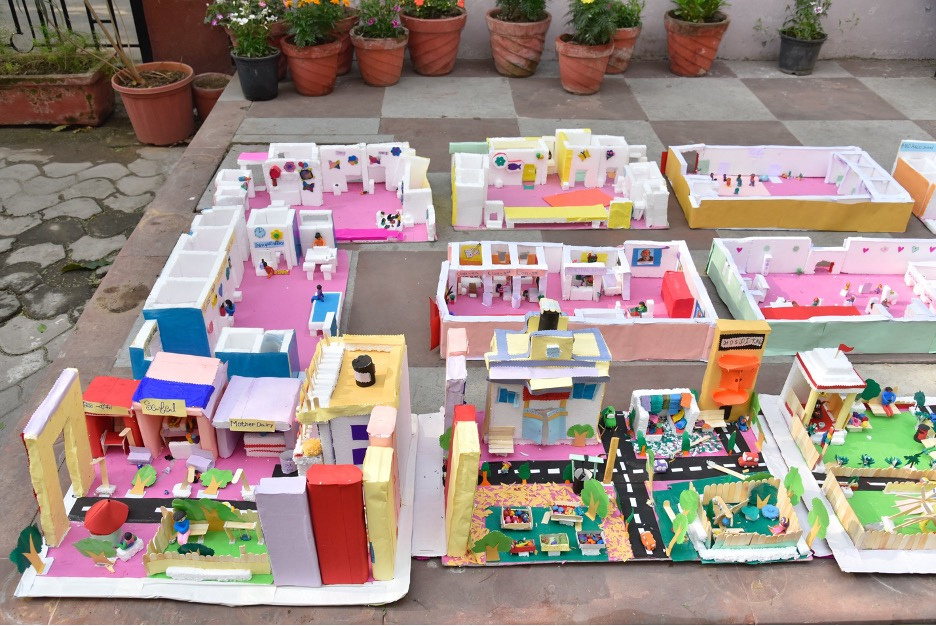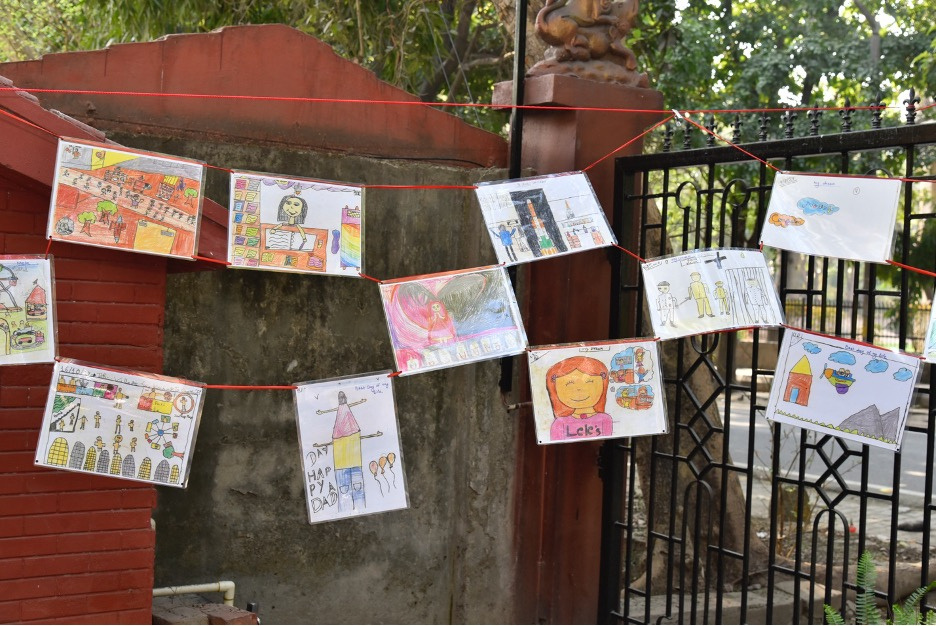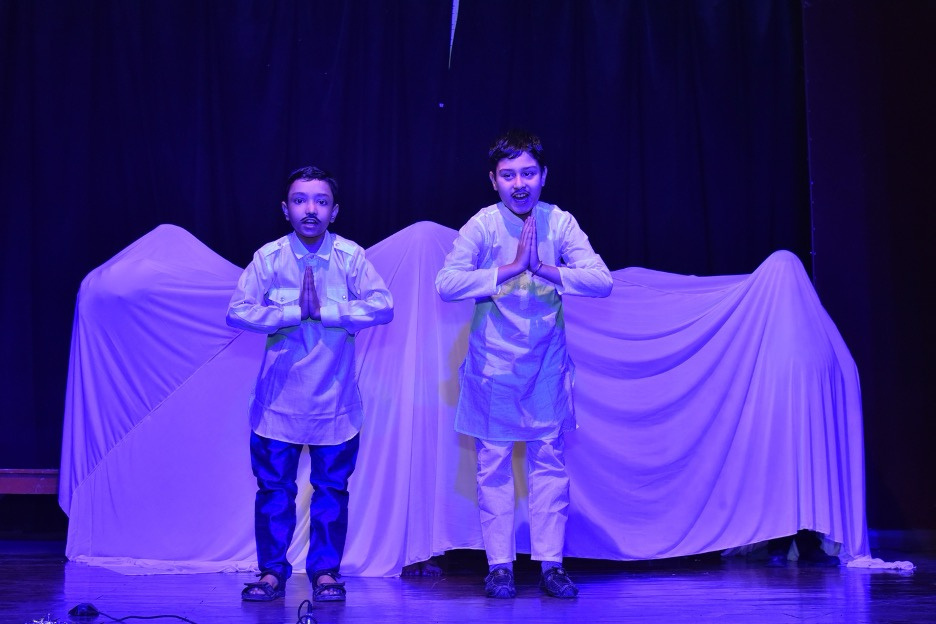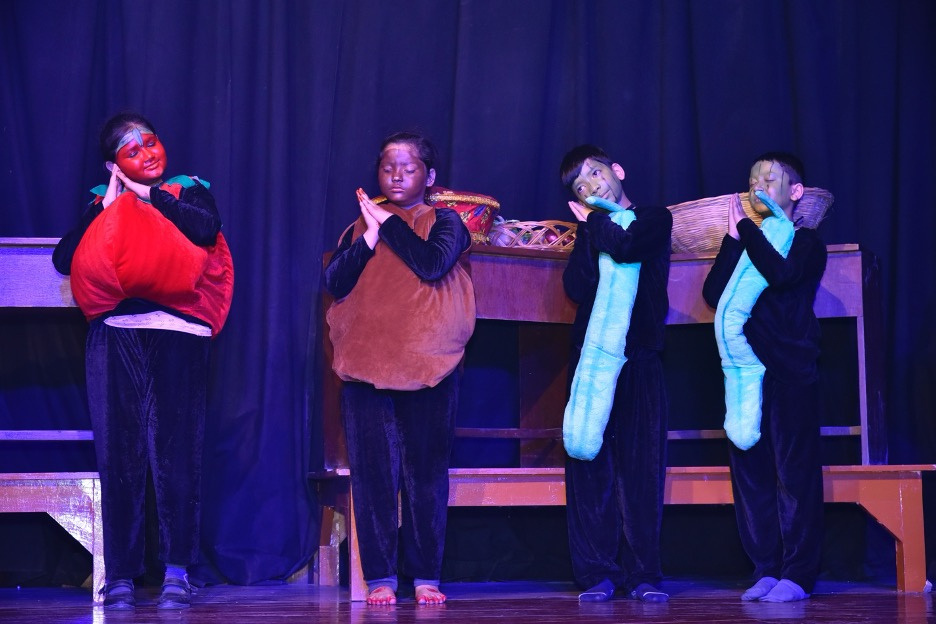School Mela
1. Exhibition of Student Work


The school was transformed into a vibrant exhibition space. Students’ drawings were mounted on classroom walls, and their models were carefully arranged on tables and stands. Each display was accompanied by student reflections—either handwritten or narrated to visitors.
Guests were invited to explore:
- Drawings that depicted everyday life, imagined futures, and personal spaces
- Models that recreated homes, neighborhoods, and school environments
- Written reflections and stories behind the artwork
Students acted as curators of their own work, describing their ideas, processes, and intentions. The focus was not on perfection, but on presence—on children being seen and heard in their own voice and form.
2. Drama Performance


The Mela’s centerpiece was a student-developed performance that combined scenes from their daily lives with themes of aspiration, justice, and celebration. The play was staged in the school’s assembly area using minimal props and student-made set elements.
The story wove together:
- Real-life experiences from Katwaria Sarai
- Scenes of school and home life
- Imagined futures with clean neighborhoods and fair communities
Characters were drawn from real life—shopkeepers, friends, teachers, parents. The performance was both playful and powerful, revealing the children’s ability to critically reflect on their world and express those insights with confidence and clarity.
3. Community Engagement
The Mela was attended by students, teachers, parents, siblings, and neighbors. It transformed the school into a public space of storytelling, exchange, and celebration.
The event created opportunities for:
- Conversations between children and parents
- Teachers seeing students in new roles and capacities
- Families gaining deeper appreciation for student creativity
For many attendees, it was their first time seeing the school not just as an academic space but as a cultural and imaginative one. It brought the wider community into the educational process, turning spectators into participants.
Conclusion
The School Mela brought the project full circle—from exploration and making to sharing and celebration. It was a moment of recognition for the students and a reflection of what meaningful, student-centered education can look like. The event left a lasting impression on everyone who attended and served as a blueprint for how schools can become creative, reflective, and inclusive spaces.
